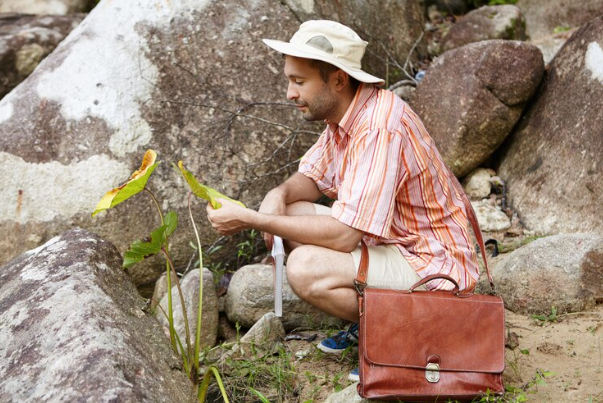What to Wear on an African Safari: Essential Packing Tips for Comfort and Style

Planning an African safari is an exciting experience, but deciding what to wear can be overwhelming. The right safari clothing ensures comfort, protection, and style, allowing you to fully enjoy your adventure. Since safaris involve different weather conditions, from scorching days to chilly mornings and evenings, having a well-thought-out wardrobe is essential. This guide covers the best clothing choices, fabrics, footwear, and accessories, along with expert packing tips to make your trip smooth and enjoyable.
- Olodi African Pathways
- Feb 13, 2025
What is the Best Clothing for an African Safari?
When selecting safari outfits, comfort, practicality, and protection should be your top priorities. Wearing neutral colors such as khaki, beige, and olive green helps you blend into the environment and reduces unwanted attention from wildlife. Pack lightweight shirts, pants, and jackets in these shades to stay comfortable while respecting the natural surroundings. Choosing breathable fabrics is crucial for coping with the heat. Since safaris often involve long hours under the sun, materials like cotton and linen help regulate body temperature and keep you cool. T-shirts, long-sleeve shirts, and convertible pants made from moisture-wicking fabrics work best for these conditions. Layering is another essential factor to consider, as temperatures fluctuate throughout the day. Mornings and evenings can be chilly, while midday can bring intense heat. A lightweight jacket, fleece, or sweater provides the flexibility to adapt to changing weather conditions without adding bulk to your luggage.
What is the Best Clothing for an African Safari?
Footwear plays a vital role in ensuring comfort during a safari. Whether you’re on a game drive or a walking safari, investing in the right shoes is important. Comfortable walking shoes are necessary since you’ll spend a lot of time on your feet. Sturdy hiking boots or trail shoes with excellent grip offer the best support for rough terrain and unpredictable paths. For relaxation at your lodge or camp, having a pair of comfortable and durable sandals is beneficial. After long hours of exploring, sandals provide a much-needed break for your feet while keeping you cool in the warm climate.
What Safari Accessories Should You Bring?
Accessories can enhance your safari experience by providing added protection and convenience. A wide-brimmed hat is essential for shielding your face and neck from the harsh African sun. A lightweight and breathable hat with a chin strap will stay secure even in windy conditions. Sunglasses are another must-have, as they protect your eyes from intense glare and harmful UV
rays. Opt for polarized sunglasses with UV protection to reduce eye strain during long hours
outdoors. A lightweight, neutral-colored scarf or bandana is also useful for shielding your face from dust, especially during game drives on dry, dusty roads.
Weather Considerations for Safari
The African climate varies depending on the region and time of year, so packing accordingly is important. During the dry season, which lasts from June to October, mornings and nights can be quite cold, while midday temperatures rise significantly. Layered clothing is the best approach for staying comfortable throughout the day.
In contrast, the wet season, which spans from November to May, brings hot and humid conditions, with occasional rainfall. Wearing moisture wicking clothing and carrying waterproof gear will help you stay comfortable. For those heading to coastal destinations like Zanzibar Beach, light and breathable clothing is ideal, as the weather is warm and humid year-round.
Are There Any Clothing Items to Avoid?
Some clothing items are unsuitable for safaris and should be avoided. Bright colors and bold patterns can attract insects and may make you stand out in the wilderness, potentially disrupting wildlife encounters. Heavy fabrics such as denim, wool, and synthetic materials can cause discomfort in hot conditions, so it’s best to stick to lightweight, breathable options. Camouflage clothing is also discouraged in many African countries, as it is often associated with military personnel and can cause unnecessary complications with local authorities.
How to Pack for Different Safari Activities?
Your safari wardrobe should match the activities you plan to participate in. For game drives, neutral-colored, lightweight clothing with layers is the best option. Since early morning and late evening drives can be chilly, packing a light jacket or sweater ensures warmth. Accessories such as a wide-brimmed hat, sunglasses, and binoculars enhance the experience by providing comfort and improved visibility. Walking safaris require sturdy hiking boots, long pants, and long-sleeve shirts for added protection against rough terrain, insects, and thorny vegetation. A walking stick and a small backpack for carrying essentials like water and sunscreen make the journey easier. Cultural visits call for modest clothing that respects local traditions. Wearing comfortable shoes and
carrying a lightweight scarf ensures both respect and practicality when visiting local communities.
For an immersive cultural experience, consider exploring Olodi African Pathways, where you can learn about the region’s rich heritage and traditions.
Packing List for Safari: A Complete Checklist
To ensure a smooth and hassle-free safari, pack clothing that aligns with the environment and
planned activities. Neutral-colored shirts, pants, jackets, and undergarments should be prioritized. Layering pieces like a fleece or sweater help with temperature changes, while comfortable hiking boots and sandals provide the necessary footwear options. Essential accessories include a hat, sunglasses, scarf, and binoculars for enhanced wildlife viewing. Sunscreen, insect repellent, and a reusable water bottle are necessary for staying protected and
hydrated during your trip.
FAQs About What to Wear on an African Safari
Neutral-colored, lightweight, and breathable clothing is ideal for a safari. Layering helps adjust to
temperature fluctuations, and comfortable footwear ensures ease of movement.
Wearing shorts is not recommended due to the risk of insect bites and sunburn. Instead, opt for
lightweight pants that offer better protection.
Bright colors and patterns should be avoided, as they can attract insects and disrupt wildlife
encounters. Sticking to earthy tones helps maintain a low profile in natural surroundings.
Yes, wearing comfortable walking shoes or hiking boots is essential, especially for game drives and
walking safaris. They provide better support and protection for outdoor activities.
A wide-brimmed hat, sunglasses, and sunscreen help protect against harsh sunlight. Wearing long-
sleeve shirts and pants provides additional coverage, reducing the risk of sunburn.
Sturdy hiking boots, long pants, and long-sleeve shirts are recommended for protection against
insects, thorns, and rough terrain.
By following these safari clothing tips, you’ll be well-prepared for an unforgettable adventure in
Africa. Whether exploring national parks, game reserves, or enjoying the coastal beauty of Zanzibar
Beach, dressing appropriately ensures a comfortable and enjoyable experience. Embrace the wild,
dress smartly, and make the most of your African safari journey!
